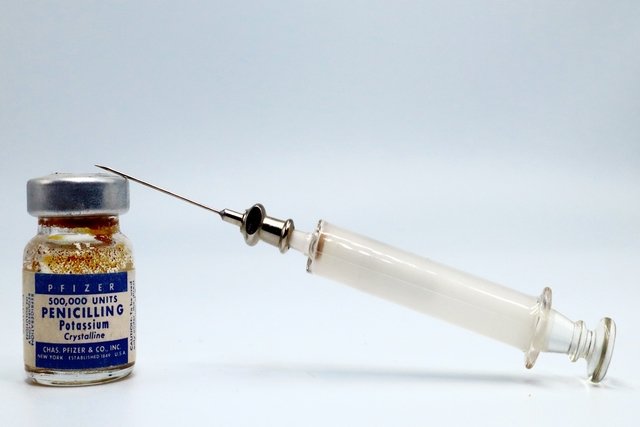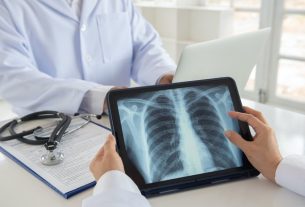The most effective medicine to treat syphilis is benzathine penicillin, which must always be administered in the form of an injection and the dose varies depending on the stage of the disease. It is important that the treatment is carried out according to the doctor’s instructions to ensure the elimination of the bacteria and, thus, reduce the risk of more serious forms of the disease.
If you are allergic to penicillin, your doctor may recommend the use of other antibiotics, such as ceftriaxone. However, penicillin is the most effective medicine and is always the first choice.
Therefore, before testing another antibiotic, desensitization to penicillin must be chosen so that treatment can be carried out with this same medication. Desensitization consists of applying small doses of penicillin until the body can no longer reject this medication.

The treatment regimen for syphilis must be carried out according to the doctor’s instructions, however, in general, it is recommended:
It is important that treatment is not interrupted, even if there are no more signs and symptoms, as the bacteria may not be properly eliminated in the body, resulting in latent syphilis, in which the bacteria remains in the body, multiplying silently and may cause more serious syphilis. after a few years. See more about the stages of syphilis.
In the case of pregnant women who are sensitive to penicillin, desensitization and treatment with benzathine penicillin are recommended. However, if it is not possible to carry out desensitization during pregnancy, the doctor may recommend treatment with Ceftriaxone, despite it being considered ineffective in this situation, and the newborn should be tested for syphilis after birth with the aim of early identification. congenital syphilis.
During treatment for syphilis, it is recommended that the person undergo a syphilis test, such as the VDRL, in order to evaluate the effectiveness of the treatment. Understand how VDRL is made.
See more about syphilis in the following video:
How penicillin desensitization is done
Desensitization to penicillin is indicated in case of allergy to this medication, especially in case of treatment for syphilis during pregnancy and treatment for neurosyphilis. This removal of sensitivity to penicillin must be done in the hospital, with the use of tablets being the safest way.
There is no indication for the use of antihistamines or steroids before using penicillin, as these medications do not prevent the anaphylactic reaction and can mask its first signs by delaying treatment.
Immediately following the desensitization procedure, treatment with penicillin should begin. If the person goes more than 28 days without having any contact with this medicine, if necessary, check again for signs of allergy and if these are present, desensitization must be started again.
How to know if you are allergic to penicillin
The test to find out if a person is allergic to penicillin consists of rubbing a small amount of this medicine on the skin and observing whether the area shows any signs of reaction, such as redness or itching. If these signs are present, the person has an allergy. This test must be performed by a nurse in a hospital setting and is usually done on the skin of the forearm.
Furthermore, after injecting penicillin, symptoms such as fever, chills, headache, pain in muscles and joints may appear, which may appear between 4 and 24 hours after the injection. To control these symptoms, your doctor may recommend taking an analgesic or antipyretic.
When penicillin is contraindicated
Treatment for syphilis cannot be done with penicillin in cases of Stevens-Johnson syndrome, toxic epidermal necrolysis and exfoliative dermatitis. In these cases, treatment for syphilis must be carried out with other antibiotics.
Bibliography
- DOMINGUES, Carmen Silvia B.; DUARTE, Geraldo; PASSOS, Mauro RL Brazilian Protocol for Sexually Transmitted Infections 2020: congenital syphilis and child exposed to syphilis. Epidemiol. Serv. Saude. Vol 30. 1-15, 2021
- BVS. New Recommendations: What is the alternative treatment for primary syphilis if it is impossible to use penicillin?. Available at: <https://aps-repo.bvs.br/aps/novas-recomendacoes-qual-eo-tratamento-alternativo-para-sifilis-primaria-na-impossabilidade-do-uso-de-penicilina/>. Accessed on May 9, 2022
- MINISTRY OF HEALTH. Therapeutic regimen for syphilis and cure control. 2017. Available at: <https://saude.rs.gov.br/upload/arquivos/201703/16152016-4-5-7-esquema-tto-sifilis.pdf>. Accessed on May 9, 2022
- CDC. 2015 Sexually Transmitted Diseases Treatment Guidelines: Syphilis. Available at: <https://www.cdc.gov/std/tg2015/syphilis.htm>. Accessed on May 28, 2019

Sign up for our newsletter and stay up to date with exclusive news
that can transform your routine!
Warning: Undefined array key "title" in /home/storelat/public_html/wp-content/plugins/link-whisper-premium/templates/frontend/related-posts.php on line 12
Warning: Undefined array key "title_tag" in /home/storelat/public_html/wp-content/plugins/link-whisper-premium/templates/frontend/related-posts.php on line 13




